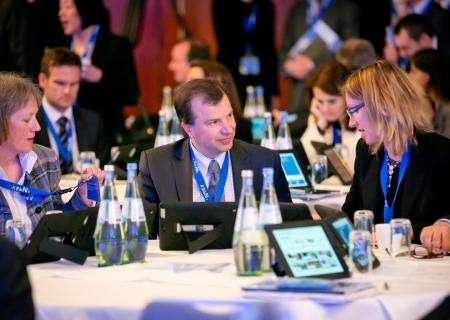Towards the new INREV Guidelines
White paper of revised INREV Guidelines to be published in September
With the white paper of the revised INREV Guidelines for members’ consultation due to be published in September, we look at the different components of the project and the progress made in the last 18 months
The publication of the revised Guidelines at the end of September will mark the beginning of a three month consultation period with the industry. The Guidelines will be published in an online format and will be accompanied by a white paper, which highlights the main differences. In the next three months, INREV will host workshops to explain the changes and ask for feedback on specific sections of the guidelines through roundtables. Workshops will take place in London, Amsterdam, Frankfurt, Munich, Stockholm and Singapore. Members can also feedback online. The project groups and committees will review the feedback and make appropriate changes before finalising the new online INREV Guidelines 2014, which will be launched at the Annual Conference in April 2014. Here we take a look at all the components of the new Guidelines, which have been reviewed in separate projects and will be part of the white paper.
Corporate Governance including AIFMD alignment
The review of the Corporate Governance principles began by ensuring they aligned to AIFMD regulations. This was undertaken by representatives from the Public Affairs and Corporate Governance Committees. No conflicts were found but some minor changes were included. The Corporate Governance committee also reviewed how to implement the principles for the range of non-listed products in the guidelines, further guidance or tools. The corporate governance guidelines were restructured as feedback showed that they were not always easy to read. This includes re-integrating aspects currently in the appendix. The project was led by the Corporate Governance Committee.
Debt and Derivatives Disclosure Note
This project began at the beginning of 2012 as one of the first projects linked to the Guidelines revision. Annual reports gathered for the Review of Reporting Best Practice were reviewed for best practice on debt disclosures. With this yielding few results, further guidance was found in the listed sector. KPMG led this project, which was overseen by the Reporting Committee.
Integrated Reporting Framework
This project began at the beginning of 2012. INREV received a representative sample of 50 quarterly reports and the project also reviewed other types of reports used for investor communications. While interim reporting guidelines were ready to sit alongside the annual reporting guidelines at the end of last year, the launch of the Standard Delivery Data Sheet (SDDS) influenced the approach. This has prompted the development of one reporting framework, which includes the annual, interim, and references to the SDDS, where relevant, in one place. Ernst & Young led the project overseen by the Reporting Committee.
Due Diligence Questionnaires
Following the launch of the first fund of funds/multi manager Due Diligence Questionnaire (DDQ), the Due Diligence Committee began a review of the original DDQ to align it with this document and also to reflect the expanded range of products that INREV now covers. This means it will also be relevant for club deals, joint ventures and separate accounts. The project is being overseen by the Due Diligence Committee. In addition, a separate DDQ is being developed for debt funds. This will be made available at a later stage.
INREV will host workshops and roundtables for feedback on specific sections of the guidelines
INREV Net Asset Value (NAV)
This challenging project began in mid-2012 as a special topic on the use of INREV NAV as part of the Review of Reporting Best Practice. These results were followed up by interviews with fund managers, which were discussed at the INREV Workshop in 2012. Further input was gained from the INREV Management Board, the Guidelines Steering Group and investors, with feedback also gathered from global organisations such as ANREV in Asia and the Real Estate Investment Standards (REIS) in the US. The project was led by Deloitte and overseen by the NAV project group, a sub group from the Reporting Committee.
INREV Fee Metrics
A review of INREV Fee Metrics had already started as part of the annual INREV Fee study in 2011. It was also a topic at the Investor Only Seminar in October 2011 to get investors views on total expense ratios (TER) in general, and INREV TER in particular. It was decided to review the fee metrics extensively so interviews were held with fund managers, fund of funds mangers and investors to understand the main issues surrounding their use. Input was also given by ANREV and recommendations to revise the metrics were discussed in great detail with REIS in the US to work towards a global standard. The group was led by Angela Crawford-Ingle and overseen by the fees project group which comprises members of the Fees Committee and the Reporting Committee.
Property Valuation
This project started at the beginning of 2013 with a sample of over 100 financial statements and 30 annual reports being reviewed to analyse valuation practices. This led to recommendations to revise the Property Valuation Guidelines, which were tested with a sample of fund managers, investors, advisors and the Reporting Committee. The revised guidelines were also discussed with valuers. The project was led by PwC and overseen by the Reporting Committee.
Exit Guidelines
Exit guidelines were always going to be part of a revision of the INREV Guidelines, as indicated in the existing version. In 2012, a sub group of the Secondary Market and Liquidity Committee highlighted some issues which were discussed at the INREV Workshop in 2012 with investors, fund of funds managers and fund managers involved in secondary trading. This feedback was used to redraft the Liquidity guidelines. They also gave recommendations relating to liquidity for other parts of the Guidelines.
For more information about any of these projects, contact Lonneke Löwik on lonneke.lowik@inrev.org.
Sustainability
Both Sustainability Working Group and the Reporting Committee felt that it was too early to add the Sustainability Reporting Recommendations to the Guidelines as the levels of adoption in the industry are still unknown. However, with sustainability much higher up the agenda than in 2008, it has been included in other parts of the Guidelines such as the DDQ. Later this year levels of adoption will be reviewed.
Performance Measurement
This project aims to provide an additional element to the Guidelines, which would give guidance on how performance should be calculated and disclosed. Valuable input for this section has come from the REIS Standards. This was further worked on by a sub-group of the Performance Measurement and Benchmarking Committee. Angela Crawford-Ingle led this project in addition to fee metrics and an involvement in the NAV discussions, which ensured a link between these projects. These guidelines will be discussed at workshops at the beginning of 2014 and, depending on the progress, either added to the revised Guidelines before the launch in April 2014 or at a later stage.
INREV/REIS mapping
The INREV Guidelines were compared with the REIS Standards in the US to show any gaps and to see if any lessons could be learned from them. The results were discussed with committees involved in the review and in some cases adjustments were made into the relevant sections of the revised Guidelines. Once the Guidelines are published in 2014, this work will be used to develop a manual to show how one can transfer from the INREV Guidelines to the REIS Standards and vice versa.











